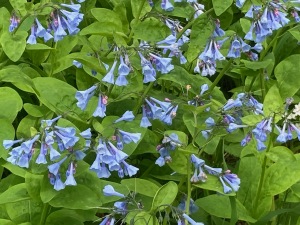
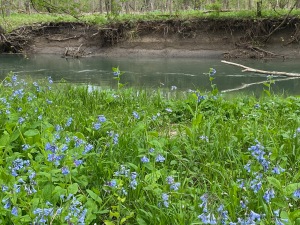
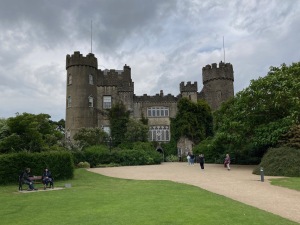
I posted parts of this a couple of years ago, but am reposting it with some changes, as it was bluebells season here again and the extravaganza of flowering bluebells is so inspiring. Plus, we were in both Ireland and Scotland last summer, so Irish and Scottish folklore seems more immediate now. We discovered that there is a link between fairies and folklore and bluebells, as our granddaughter had great fun following the Fairy Trail at Malahide Castle, not too far from Dublin. They didn’t find any fairies, but did see a few bluebells.
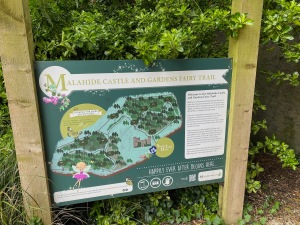
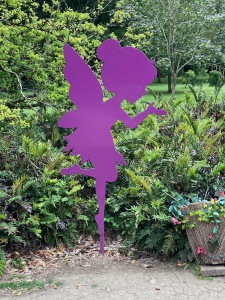
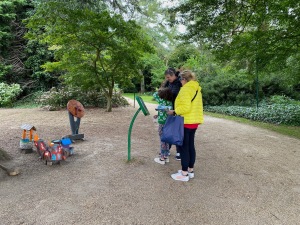
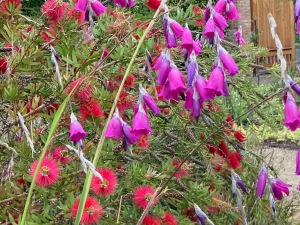
We were recently walking a trail in a local Forest Preserve in Illinois and looking for the flowering bluebells patch that we’ve seen in previous years. And they didn’t disappoint. There were thousands, maybe millions, of them, glowing blue amidst the greenery, all spread out for more than half a mile under the trees along the path.
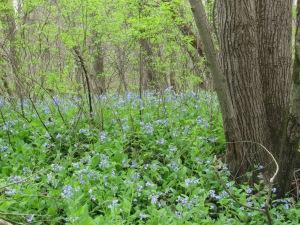
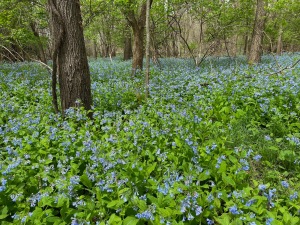
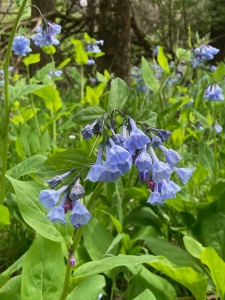
This wildflower spectacle is a glorious, enchanting, sight and we returned home feeling refreshed and re-energized. It really is a wonderful example of the healing power of nature, so beguiling we could almost believe in magic again, and so beautiful that we couldn’t stop taking more and more photos! This experience got me thinking about bluebells and a little bit of reading brought up some very interesting facts and ideas.
The Name and Symbolism
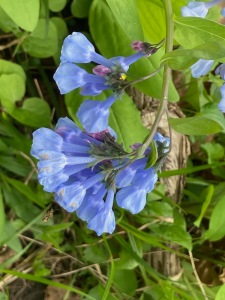
The bluebells here in Illinois are a native woodland wildflower, Latin name Mertensia virginica, part of the borage family. So, they are a little different to the European variety, where they are a member of the hyacinth family, Latin name Hyacinthoides non-scripta from the 1970s. Prior to that, it was Endymion non-scriptus. In Greek legend, Endymion was a beautiful, but mortal, young man who was lulled into an eternal sleep by his lover, the moon goddess Selene, so that he would never grow old and die. That’s why the flower is associated with everlasting love and constancy. But, the flowers are all beautiful, and I can easily imagine our Illinois waves of bluebells having just as many meanings and myths as the English ones. It turns out that here and there we also found pink bluebells and a few white ones, and we did find a few bright pink ones in Ireland.
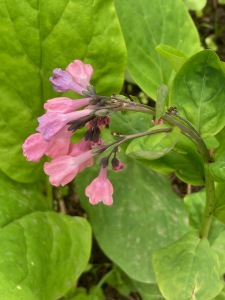
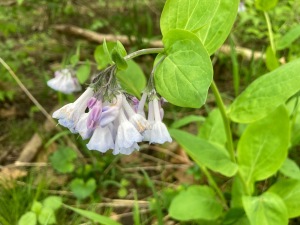
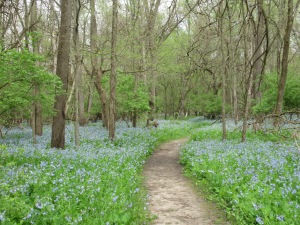
Another popular meaning for bluebells is humility and sometimes gratitude.
Turns out that this woodland flower is very special in Scottish, and especially Irish, myth and legend. The bluebell is present everywhere in Britain, except Orkney and Shetland. In Scotland bluebells are also called harebells, because it’s believed that witches turn into hares and hide among the flowers. Sometimes they are also known as witches’ thimbles. It was/is a symbol of beauty in Irish myth, and the Irish name is Coinnle corra.
Herbalists believed that bluebells could help prevent nightmares, and could be used as an aid against leprosy, spider-bites and tuberculosis, but the English (and Spanish) bluebell is poisonous. The bulbs are very toxic and this toxicity may be the origin of the superstitious belief that anyone who wanders into a ring of bluebells will fall under fairy enchantment and die soon after.
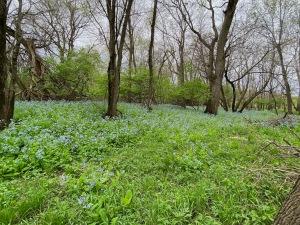
Other folklore tales come from a time when forests were forbidding places, and people believed that the bells rang out to summon fairies to their gatherings. Unfortunately, any human who heard a bluebell ring would soon die.
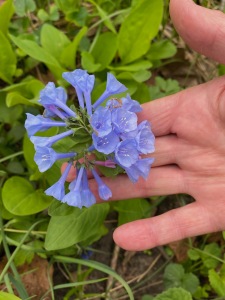
So, it’s not surprising that it was considered unlucky to trample on a bed of bluebells, because you would anger the fairies resting there. It was also thought to be unlucky to pick bluebells or bring them into the house.
However, not all the bluebell’s folklore is quite so gloomy. Some folks believed that by wearing a wreath made of the flowers, the wearer would be induced to speak only truth. Others believed that if you could turn one of the flowers inside out without tearing it, you would eventually win the one you love.
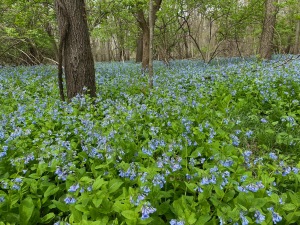
Amazing Uses
The gummy sap of the underground bulbs, which made it useful as a starch substitute, was used as a glue for things such as bookbinding (it’s so toxic that it stops certain insects from attacking the binding) and fixing the tail feathers on arrows! Apparently, the same type of technology is used today: a varnish that covers overhead wires, and the wiring systems of nuclear missiles contains some kind of poison that stops insects, birds, and mice, for example, from chewing the outer casing of the wires, thus preventing a short circuit.
Who would have thought!
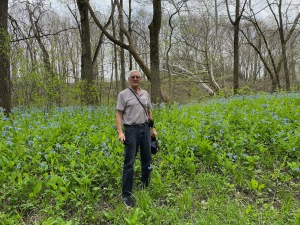
Knowing this now makes seeing that sea of bell-like flowers even more special and almost magical. If I were in Ireland, for sure I’d be looking out for fairies!
I found a great site that lists many places to find bluebells in Ireland, in April and May https://www.mykidstime.com/ireland/best-places-see-bluebells-ireland/
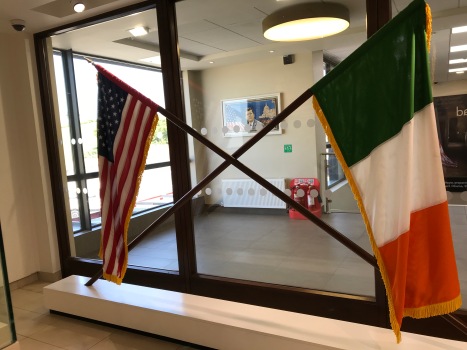


















































 When we were in Brittany, one town we stayed in was Auray and one of the things we did there was to visit a huge shop/factory called La Trinitaine (which I’ll cover in the next post).
When we were in Brittany, one town we stayed in was Auray and one of the things we did there was to visit a huge shop/factory called La Trinitaine (which I’ll cover in the next post).


 First: The flag of the Bretons (called Gwenn-ha-du) in Brittany (Breizh) is a 20th-century creation and design flown in public for the first time in 1925, though there are older elements in it. The French for many years tried to suppress any cultural and linguistic distinctions of the Celtic Bretons, who are descendants of Celtic Britons (mostly from Cornwall) who fled their island from invading Romans and settled in what is now Brittany, but then called Armorica. At first the flag was thought of as seditious, but is now recognized and accepted as the regional Brittany flag.
First: The flag of the Bretons (called Gwenn-ha-du) in Brittany (Breizh) is a 20th-century creation and design flown in public for the first time in 1925, though there are older elements in it. The French for many years tried to suppress any cultural and linguistic distinctions of the Celtic Bretons, who are descendants of Celtic Britons (mostly from Cornwall) who fled their island from invading Romans and settled in what is now Brittany, but then called Armorica. At first the flag was thought of as seditious, but is now recognized and accepted as the regional Brittany flag.








 Please note: the Museum is currently closed, due to the Covid-19 pandemic, so please check the website when restrictions are eased.
Please note: the Museum is currently closed, due to the Covid-19 pandemic, so please check the website when restrictions are eased.

 The Museum of Scotland focuses on telling the story of Scotland and its peoples, while the Royal has more exhibits with artefacts from around the world, including dinosaur skeletons, plus a series of changing exhibitions.
The Museum of Scotland focuses on telling the story of Scotland and its peoples, while the Royal has more exhibits with artefacts from around the world, including dinosaur skeletons, plus a series of changing exhibitions.


 The Museum of Scotland has seven levels presenting the history of Scotland—the land, its peoples and their achievements. Pick up a plan at the Information desk, then start on Level 0 with the country’s geological formation and the earliest people, and continue up to the 20th century on Level 6.
The Museum of Scotland has seven levels presenting the history of Scotland—the land, its peoples and their achievements. Pick up a plan at the Information desk, then start on Level 0 with the country’s geological formation and the earliest people, and continue up to the 20th century on Level 6.



































 Over the course of many visits to Scotland we’ve noticed that the use of heraldry is very common, and very colorful. There’s always a story attached to the shields, coats of arms, emblems, flags etc. if you’re interested and try to find out.
Over the course of many visits to Scotland we’ve noticed that the use of heraldry is very common, and very colorful. There’s always a story attached to the shields, coats of arms, emblems, flags etc. if you’re interested and try to find out.


















